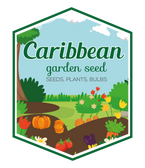
Pink Brandywine tomato seeds, annual Amish heirloom
FAST & FREE SHIPPING
Over 90% of our orders are processed and ship out by next business day.
We are currently processing and shipping most orders within 1-3 business days. (backorders not included) Due to high demand during the peak months of January to May, orders may require additional time for packaging /shipment.
Free shipping for orders over $54.95. Excludes live plants, fresh products And Stackable Black Plastic Nursery Crate
Shipping and handling charges will cover outbound freight and packaging materials. Fees are applicable to all orders, based on total order value pre-tax. Expedited services can be selected at Checkout with extra fees.
- Free shipping to lower 48 states on orders $54.95+
- (Most Items), excluding live plants, plant bulbs, and black plastic nursery crate.
- Safe Seed Pledge
- Satisfaction Guaranteed
- Select your desired size and/or color from the available options.
Heirloom Tomato Seeds - 'Brandywine Pink' - Organic ! Great for Sandwiches, salads, grilling and more !
This particular heirloom variety of beefsteak-sized tomato, originating from the Amish community, yields an abundance of rosy pink fruits that are renowned for their nostalgic, traditional tomato flavor. It is considered one of the benchmarks for intense tomato flavor. The indeterminate vines are vigorous, so use tall cages. Vines yield tomatoes that ripen gradually until frost. Plants have "potato leaf" foliage. The tangy taste of Brandywine is a gourmet cook's delight.
Growing Brandywine Tomato Seeds: Indeterminate tomato varieties often perform best when provided with a trellis or support, since this protects them from various pests and diseases in connection with too much soil contact.
Prepare plant supports and tie vines to aid growth. Protect from cold and conserve moisture with mulch. Prune "suckers" for better production and plant strength.
Harvesting Brandywine Tomato: Gently press tomatoes to test ripeness. Mature color also indicates ripeness. For harvesting, cut stem with scissors if it doesn't come off easily. Vine ripened tomatoes have best flavor, even unripe ones. Keep in warm place to ripen. Black Brandywine plants produce abundant, sweet, earthy tomatoes.
Saving Brandywine Tomato Seeds: Since cross pollination between most tomato varieties is unlikely, isolation is not a concern. Pick fully ripe tomatoes and cut them in half horizontally, across the middle; squeeze out the pulp into a container. An alternative method for smaller tomatoes is to put them in a blender and pulse the mixture, since the seeds are hard and slippery and will not be harmed. Let the mixture ferment for several days or until a thick layer of mold has formed; this process removes the gelatinous layer on the seeds. Pour off the mold and debris, saving the good seeds on the bottom. Rinse the seeds in a strainer under running water until they are clean, then spread them out to dry in a protected location away from direct sunlight. Stir them twice a day, and provide a fan to speed drying if the air is humid. Once the seeds are completely dry, store them in a cool, dry location for up to four years.
HOW TO GROW GUIDE
LET OUR CUSTOMER SPEAK FOR US

![[Seeds] - Caribbeangardenseed](http://caribbeangardenseed.com/cdn/shop/files/gift-card-gift-card-1_1024x1024_dfa857db-9150-4315-a362-7f0bb3fb9c47_60x28.png?v=1722895789)








